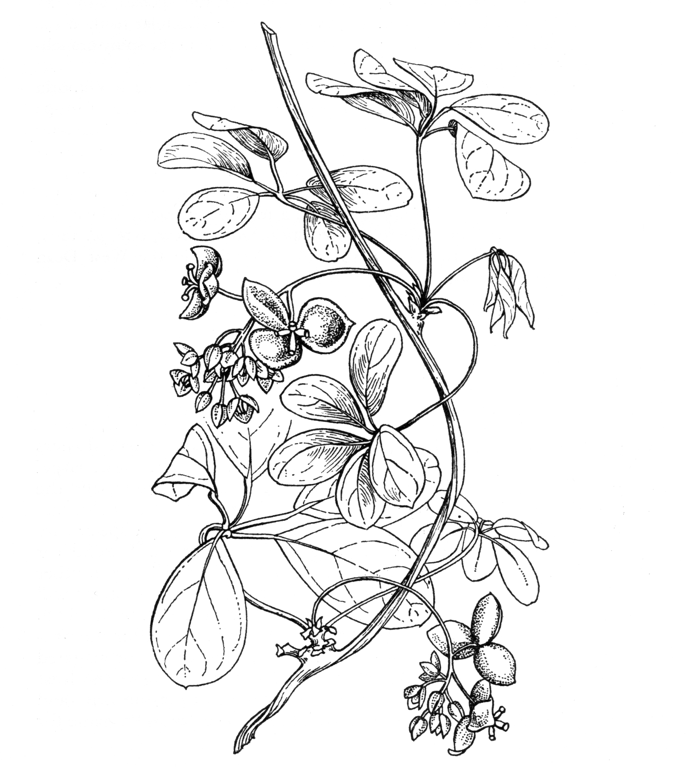A twining shrub 30 to 40 ft in length, evergreen in mild winters and in warm localities, but losing its leaves where the conditions are more severe. Leaves with slender stalks 3 to 5 in. long, carrying normally five (sometimes three or four) radially arranged leaflets. Leaflets glabrous, oblong or obovate, distinctly notched at the apex, 11⁄2 to 3 in. long, with stalks about 1⁄2 in. long. Flowers produced on slender, pendent racemes, very fragrant; males 1⁄4 in. across, with pale purple, reflexed sepals, and occupying the terminal part of the raceme; females (usually two) 1 to 11⁄2 in. across, dark chocolate-purple, the sepals broadly elliptical and concave. Fruit 21⁄2 to 4 in. long, in shape like a thick sausage, greyish violet or purplish in colour, containing numerous seeds immersed in white pulp. Bot. Mag., t. 4864.
First introduced in 1845 from the Island of Chusan by Robert Fortune, this climber has since been found to be native also of Japan, China, and Korea. It is perfectly hardy in a sheltered dell at Kew, but does not develop its handsome fruit out-of-doors. In the south-western counties it succeeds admirably, and is valued for the charming, spicy fragrance of its flowers, at times perceptible yards away from the plant, although even there the fruit is never abundantly borne. The failure to fruit would be understandable if, as is quite possibly the case, the individual plant is partly or wholly sterile to its own pollen and hence to that of any other plant of the same clone. The remedy would be to grow two or more plants known to be of diverse origin.
A. × pentaphylla (Mak.) Mak. – A hybrid between the two species of Akebia and intermediate between them. It occurs in the wild and is, of course, very likely to occur among seedlings raised in gardens where both species are grown. For an interesting account of deliberate cross-pollination see Journ. R.H.S., Vol. 70, 1957, p. 215.


